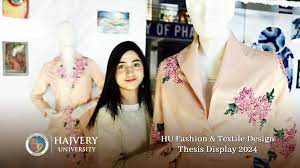Pursuing a Bachelor of Fashion Design is an exciting and rewarding journey that equips aspiring designers with the skills, knowledge, and experience needed to thrive in the dynamic fashion industry. This guide provides a comprehensive overview of the Bachelor of Fashion Design program for 2024, detailing the curriculum, career opportunities, and benefits of this educational path.
Overview of the Bachelor of Fashion Design Program
Program Structure
The Bachelor of Fashion Design program is typically a four-year degree that combines theoretical knowledge with practical skills. The curriculum is designed to provide a well-rounded education in fashion design, covering various aspects such as design principles, textile science, fashion history, and business management.
Core Subjects
Students in a Bachelor of Fashion Design program will study a wide range of subjects, including:
- Fashion Illustration: Techniques for sketching and visualizing garment designs.
- Pattern Making and Draping: Methods for creating patterns and draping fabrics to construct garments.
- Textile Science: Understanding different fabrics, their properties, and applications.
- Fashion History: Exploration of fashion trends and movements throughout history.
- Computer-Aided Design (CAD): Using software tools for designing and creating fashion illustrations.
- Fashion Marketing and Merchandising: Strategies for marketing fashion products and managing retail operations.
Electives and Specializations
Many programs offer elective courses and specializations, allowing students to tailor their education to their interests and career goals. Specializations may include areas such as sustainable fashion, accessory design, or digital fashion.
Benefits of a Bachelor of Fashion Design
Comprehensive Education
A Bachelor of Fashion Design provides a comprehensive education that covers both creative and technical aspects of fashion. This balanced approach ensures that graduates are well-prepared for the diverse demands of the fashion industry.
Hands-On Experience
Students gain hands-on experience through practical assignments, workshops, and internships. These opportunities allow them to apply their knowledge, develop their skills, and build a professional portfolio.
Industry Connections
Fashion design programs often have strong connections with the industry, providing students with networking opportunities, guest lectures from industry professionals, and access to fashion events and competitions.
Career Opportunities
A Bachelor of Fashion Design opens the door to various career paths in the fashion industry, including:
- Fashion Designer: Creating original clothing and accessory designs.
- Textile Designer: Designing fabrics and patterns for use in fashion and home decor.
- Fashion Illustrator: Creating visual representations of fashion designs.
- Fashion Merchandiser: Managing product development, marketing, and retail operations.
- Fashion Stylist: Curating outfits and styles for individuals, photoshoots, and events.
Key Skills Developed in the Program
Creative and Artistic Skills
Students develop their creative and artistic abilities, learning how to translate their ideas into visually appealing designs. This includes skills in sketching, color theory, and fabric selection.
Technical Proficiency
The program emphasizes technical skills such as pattern making, sewing, and garment construction. Proficiency in these areas is essential for bringing designs to life.
Critical Thinking and Problem-Solving
Fashion design involves addressing various challenges, from material selection to production processes. Students learn to think critically and solve problems effectively.
Business Acumen
Understanding the business side of fashion is crucial for success. Courses in marketing, merchandising, and entrepreneurship provide students with the knowledge needed to navigate the commercial aspects of the industry.
Choosing the Right Fashion Design School
Accreditation and Reputation
When selecting a fashion design school, consider its accreditation and reputation. Accredited programs meet high educational standards, and a school with a strong reputation can enhance your resume and career prospects.
Faculty and Resources
Look for programs with experienced faculty who have industry experience. Access to state-of-the-art facilities, including design studios, sewing labs, and computer labs, is also important.
Internship and Networking Opportunities
A program that offers internships and strong industry connections can provide valuable real-world experience and networking opportunities. This can be instrumental in launching your career after graduation.
Location
Consider the school’s location, especially if you are interested in studying in a fashion capital like New York, Paris, or Milan. Being in a major fashion hub can provide additional opportunities for internships, networking, and exposure to the industry.
Applying to a Bachelor of Fashion Design
 Program
Program
Admission Requirements
Admission requirements vary by school but typically include:
- High School Diploma or Equivalent: Proof of secondary education completion.
- Portfolio: A collection of your design work showcasing your skills and creativity.
- Personal Statement: An essay explaining your interest in fashion design and your career goals.
- Letters of Recommendation: References from teachers or professionals who can attest to your abilities and potential.
Application Process
The application process generally involves submitting an online application, providing required documents, and possibly attending an interview or portfolio review. Be sure to check each school’s specific requirements and deadlines.
Financial Aid and Scholarships
Explore financial aid options and scholarships to help fund your education. Many schools offer scholarships based on academic achievement, talent, or financial need.
Fashion Designer
As a fashion designer, you’ll create original clothing and accessory designs. This role involves sketching ideas, selecting fabrics, creating patterns, and overseeing the production process. You might work for a fashion house, a brand, or launch your own label.
Textile Designer
Textile designers specialize in creating fabric patterns and designs. They work closely with fashion designers to develop unique textiles that enhance garments. This role requires a deep understanding of fabric properties and dyeing techniques.
Fashion Illustrator
Fashion illustrators create visual representations of fashion designs. Their work includes fashion sketches, technical drawings, and digital renderings. This role often involves collaborating with designers and marketers to visualize collections.
Fashion Merchandiser
Fashion merchandisers manage the product development, marketing, and retail strategies of fashion lines. They analyze market trends, plan product assortments, and work to ensure that collections meet consumer demand and drive sales.
Fashion Stylist

Fashion stylists curate outfits and styles for individuals, photoshoots, fashion shows, and events. They work with clients to select clothing and accessories that suit their personal style and the occasion. Stylists need a keen eye for detail and a deep understanding of fashion trends.
Costume Designer
Costume designers create clothing for film, theater, and television productions. They research historical periods, collaborate with directors, and design costumes that help bring characters to life. This role combines fashion design with storytelling.
Fashion Buyer
Fashion buyers select and purchase the clothing and accessories that retailers sell. They travel to fashion shows, meet with suppliers, and choose products that align with their store’s brand and customer preferences. This role requires strong negotiation skills and market knowledge.
Sustainable Fashion Consultant
Sustainable fashion consultants advise brands on how to incorporate eco-friendly practices into their production processes. This role involves knowledge of sustainable materials, ethical production practices, and strategies for reducing environmental impact.
The Importance of Internships and Networking
Gaining Real-World Experience
Internships provide invaluable hands-on experience in the fashion industry. They allow you to apply classroom knowledge in real-world settings, learn from industry professionals, and gain insights into the day-to-day operations of fashion businesses.
Building a Professional Network
Networking is crucial in the fashion industry. Attend fashion shows, industry events, and workshops to meet professionals and peers. Building a strong network can lead to job opportunities, collaborations, and mentorship.
Portfolio Development
An impressive portfolio is essential for showcasing your skills and creativity to potential employers or clients. Use your internship projects and freelance work to build a diverse portfolio that highlights your strengths and versatility.
Staying Updated with Fashion Trends
Fashion Publications and Blogs
Regularly reading fashion magazines, blogs, and trend reports keeps you informed about the latest trends and industry news. Publications like Vogue, Harper’s Bazaar, and WWD are excellent sources of information.
Social Media and Influencers
Follow fashion influencers, designers, and brands on social media platforms like Instagram, Pinterest, and TikTok. These platforms provide real-time updates on trends and can serve as inspiration for your designs.
Fashion Shows and Trade Shows
Attend fashion shows and trade shows to see the latest collections and innovations in fashion. Events like New York Fashion Week, Paris Fashion Week, and Première Vision are great opportunities to observe trends and network with industry professionals.
Embracing Technology in Fashion Design
Design Software
Proficiency in design software like Adobe Illustrator, Photoshop, and CLO 3D is increasingly important. These tools allow you to create detailed sketches, technical drawings, and 3D garment simulations.
3D Printing and Digital Fabrication
3D printing and digital fabrication technologies are revolutionizing fashion design. They enable designers to create complex structures, custom fits, and innovative materials that were previously impossible.
Virtual Fashion Shows
Virtual fashion shows and augmented reality (AR) experiences are becoming more common. These technologies allow designers to showcase their collections to a global audience without the limitations of physical events.
The Role of Sustainability in Fashion
Sustainable Materials
Incorporating sustainable materials, such as organic cotton, recycled polyester, and biodegradable fabrics, is crucial for reducing the environmental impact of fashion production.
Ethical Production Practices
Ensure fair labor conditions and minimize waste through ethical production practices. Consider using zero-waste patterns, upcycling, and local manufacturing to promote sustainability.
Transparency and Consumer Awareness
Being transparent about your supply chain and sustainability efforts builds trust with consumers. Communicate your commitment to ethical practices through marketing and branding initiatives.
Conclusion: Your Journey to Becoming a Fashion Designer
Pursuing a Bachelor of Fashion Design in 2024 is a stepping stone to a vibrant and creative career in the fashion industry. By focusing on developing your skills, gaining practical experience, and staying connected with industry trends and innovations, you can build a successful career as a fashion designer. Embrace the challenges and opportunities that come your way, and let your passion for fashion guide you to new heights.











